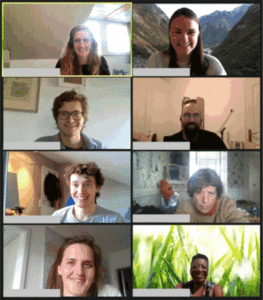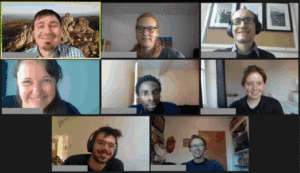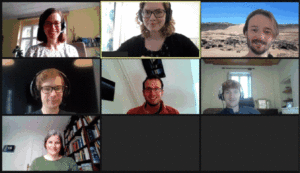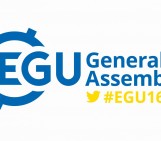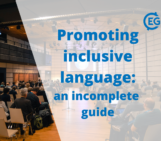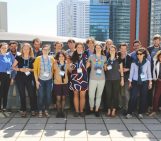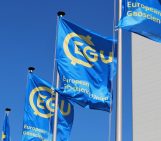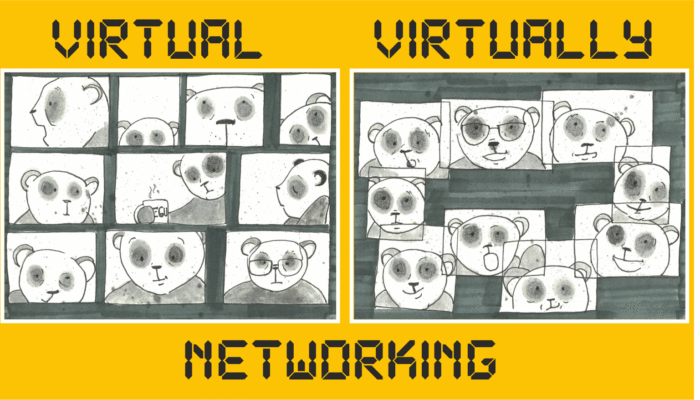
Research rarely follows a straight path and it is normal for challenges to arise during a scientific career. These challenges may come from scientific issues, like inaccessible field sites or data or unavailable/insufficient methods, or from social or personal problems and so on. This year we are facing an additional problem in our inability to meet in person, travel and go to the field. As we all know, it can be hard to discuss ideas and network with people online, even if we know each other, but it is even more difficult to meet new people, particularly for Early Career Scientists. In this new environment of digital work – we need to find innovative ways of solving our challenges – together.
At vEGU21 this year, we ran a networking event based on the idea that by defining a problem we are already halfway to finding the solutions or next steps to solve it: NET3: Crowd-solving problems in Earth Sciences. Similar to former short courses at EGU in 2018/2019, we started by discussing problems we face in our daily scientific life. This years’ problems were closely related to the special situation we are in globally, but also apply to the scientific system we are part of. We structured the timed discussions in break out groups, by asking:
1) Why is it a problem?
2) How to solve it or what do we need to solve it?
3) What to do (next)?
Here we want to share how we crowd-solved some of our community’s biggest challenges in 2021!
Ground truthing – the truth lies within.
Many people in the geoscience community, rely on ground- or fieldwork for data, but, for years, access to field sites has been limited due to disability, political, environmental or financial restrictions. The current pandemic simply made these limitations the rule. One approach to mitigate and compensate these limitations is to use remote sensing techniques, but how reliable are remote data or data compilations as a standalone if you cannot ground-truth them?
We brainstormed challenges we would face if we could never ground truth our data again. Technological limitations and the necessity of field measurements were main concerns. For example, temporal and spatial high resolution satellite data coverage is not available for all sites and remote imagery/numerical modelling based approaches rely on complimentary field observations, samples, or parameters collected in the field.
So then we asked: How could we adapt to a world without ground truthing? We discussed how reassessing the data would be important in this scenario. For example, increased investment in citizen science projects could help to support field dominant studies and funding for better sensors would help with temporal and spatial resolution concerns. We reasoned that investment in open access datasets and promoting data sharing should be a priority. If everyone with field data on alluvial fans came together to create large datasets, think of all the problems we could solve without needing access to fieldwork!
A process waiting to happen…
In geoscience we try to observe physical processes that act over a large range of spatial and temporal scales. However, these scales do not necessarily match those of our projects. What if the process we need to observe doesn’t happen in time?
To find a solution, we discussed the need to address the means of observation, which is influenced by factors like the frequency and magnitude of processes and events. Challenges that arise from this mismatch of scales include things like making a direct comparison of observations and models that integrate over different time scales, or projects that aim to observe rare processes without a good safety net. Projects like these can be risky – especially for Early Career Scientists who might be unable to collect useful data. But aren’t no results, also results?!
To compensate for this challenge, using proxy data, studying past events or focusing on smaller, more frequent events and then upscaling the observations are possible solutions. Some of us argued that thinking about different scales of the processes and observations is an integral part of being a geoscientist. There is always something to write about.
In significance we trust our statistics
Is the correlation in your data statistically significant and what does the significance signify? Do we use statistics to test our hypotheses only with the aim to find a significant (publishable) result?
A result is considered statistically significant if the probability to achieve this result (the so-called p-value) is smaller than an arbitrarily chosen threshold value (commonly 5%), signifying that the null hypothesis is rejected. Statistically “significant” results seem a lot more convincing and easier to publish, however, this practice is often criticized as the significance threshold can be attained with statistical tricks (size and structure of datasets), is set arbitrarily and prone to misinterpretation. Do we put unjustified trust in statistical significance and, consequently, should we abandon it? With all this doubt around such a common statistical tool, how should we handle statistical significance in our studies?
We know that it is tempting to blindly test data with the hope of finding a statistically significant correlation. However, formulating a null hypothesis at the start of our studies, but mitigating the pressure to achieve statistical significance by avoiding a distinction of ‘publishable’ significant results, and only using the p-value as additional information on the dataset will help. Additionally, better statistical education is needed for researchers to correctly interpret different statistical tests.
Although virtual, everyone very much enjoyed discussing our challenges, and virtually networking with peers. Thus, for EGU22, we want to again focus (virtually and/or in person) on problems that many of us face as geoscientists.
If you want to get involved, we are looking for people who:
- have a problem they want to share and crowd-solve,
- want to join the team of conveners,
- have a solution to all problems!
Authors: Anne Voigtländer, Erin Harvey, Gerald Raab, Hannah Gries, Johanna Menges, Renee van Dongen, Samuel Woor, Stefanie Tofelde.
We are all Early Career Earth Scientists who think the best solution to a challenge is discussion with others, regardless where they are from (background, status, etc.). We all work in Europe at different institutes and universities, so if you want to get in touch with us – you can find us at GFZ Potsdam, University of Cardiff, University of Zürich, the ETH Zürich, Marum Bremen, BAFG Koblenz, University of Oxford, and Potsdam!

